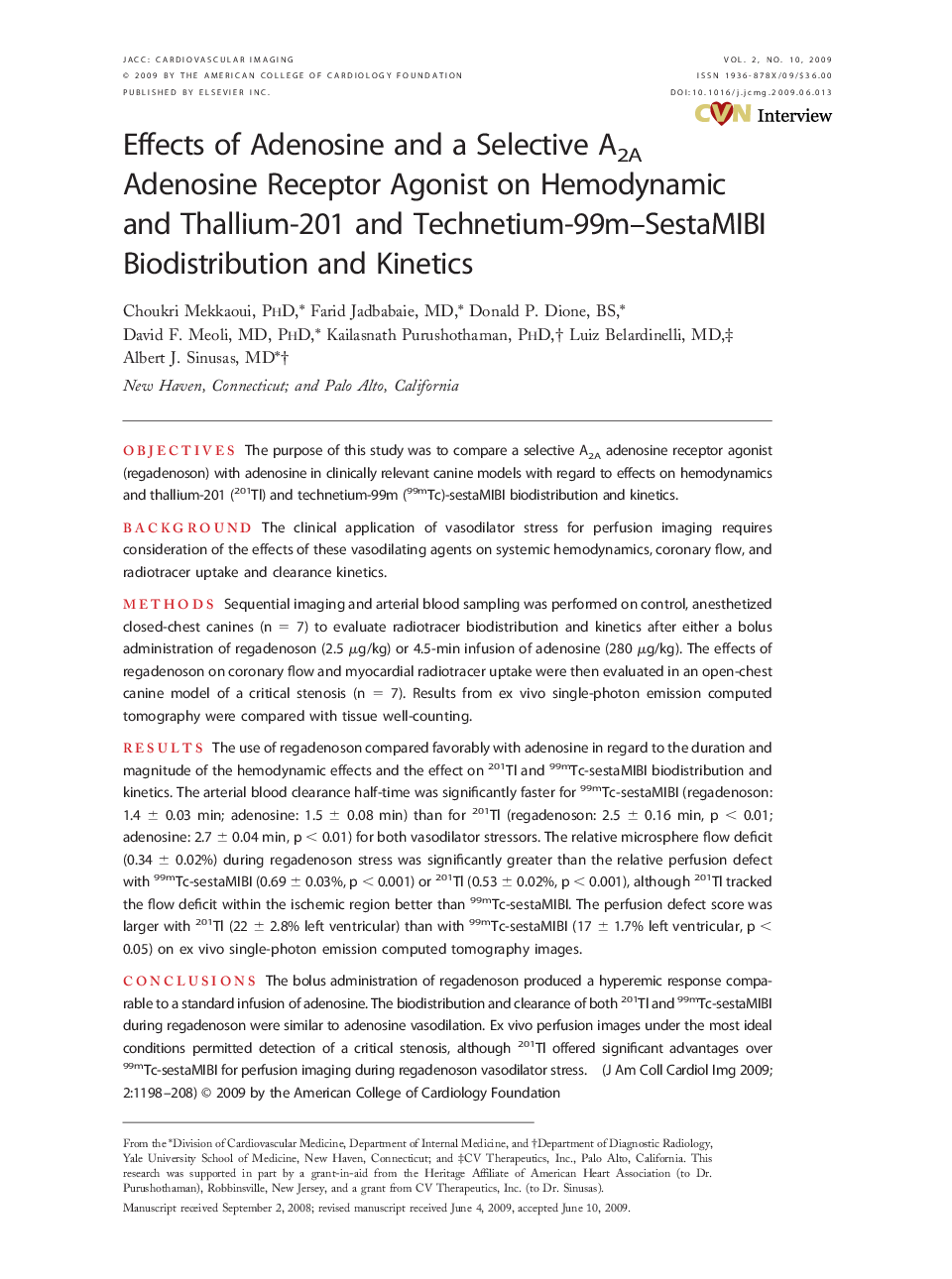| کد مقاله | کد نشریه | سال انتشار | مقاله انگلیسی | نسخه تمام متن |
|---|---|---|---|---|
| 2938797 | 1176957 | 2009 | 11 صفحه PDF | دانلود رایگان |

ObjectivesThe purpose of this study was to compare a selective A2A adenosine receptor agonist (regadenoson) with adenosine in clinically relevant canine models with regard to effects on hemodynamics and thallium-201 (201Tl) and technetium-99m (99mTc)-sestaMIBI biodistribution and kinetics.BackgroundThe clinical application of vasodilator stress for perfusion imaging requires consideration of the effects of these vasodilating agents on systemic hemodynamics, coronary flow, and radiotracer uptake and clearance kinetics.MethodsSequential imaging and arterial blood sampling was performed on control, anesthetized closed-chest canines (n = 7) to evaluate radiotracer biodistribution and kinetics after either a bolus administration of regadenoson (2.5 μg/kg) or 4.5-min infusion of adenosine (280 μg/kg). The effects of regadenoson on coronary flow and myocardial radiotracer uptake were then evaluated in an open-chest canine model of a critical stenosis (n = 7). Results from ex vivo single-photon emission computed tomography were compared with tissue well-counting.ResultsThe use of regadenoson compared favorably with adenosine in regard to the duration and magnitude of the hemodynamic effects and the effect on 201Tl and 99mTc-sestaMIBI biodistribution and kinetics. The arterial blood clearance half-time was significantly faster for 99mTc-sestaMIBI (regadenoson: 1.4 ± 0.03 min; adenosine: 1.5 ± 0.08 min) than for 201Tl (regadenoson: 2.5 ± 0.16 min, p < 0.01; adenosine: 2.7 ± 0.04 min, p < 0.01) for both vasodilator stressors. The relative microsphere flow deficit (0.34 ± 0.02%) during regadenoson stress was significantly greater than the relative perfusion defect with 99mTc-sestaMIBI (0.69 ± 0.03%, p < 0.001) or 201Tl (0.53 ± 0.02%, p < 0.001), although 201Tl tracked the flow deficit within the ischemic region better than 99mTc-sestaMIBI. The perfusion defect score was larger with 201Tl (22 ± 2.8% left ventricular) than with 99mTc-sestaMIBI (17 ± 1.7% left ventricular, p < 0.05) on ex vivo single-photon emission computed tomography images.ConclusionsThe bolus administration of regadenoson produced a hyperemic response comparable to a standard infusion of adenosine. The biodistribution and clearance of both 201Tl and 99mTc-sestaMIBI during regadenoson were similar to adenosine vasodilation. Ex vivo perfusion images under the most ideal conditions permitted detection of a critical stenosis, although 201Tl offered significant advantages over 99mTc-sestaMIBI for perfusion imaging during regadenoson vasodilator stress.
Journal: JACC: Cardiovascular Imaging - Volume 2, Issue 10, October 2009, Pages 1198–1208